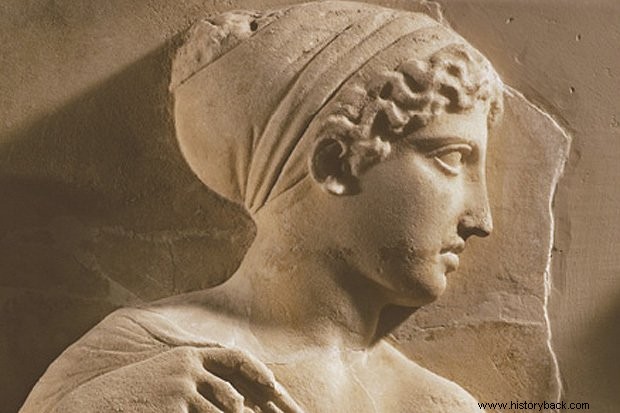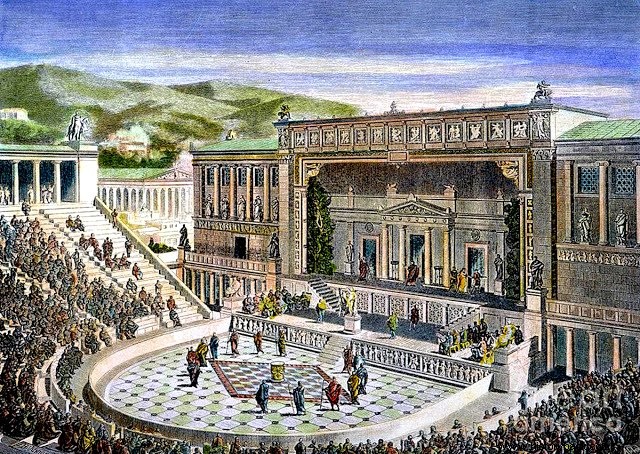Greek art embraces all artistic manifestations and reveals the history, aesthetics and even philosophy of this civilization.
The Greek people were in antiquity one of those who exhibited freer cultural manifestations, surrendering little to the orders of kings and priests, as they believed that the human being was the most incredible conception in the universe.
Greek art passed through the archaic, classical and Hellenistic periods, and each of these historical phases influenced the elaboration of the works.

Characteristics of Greek Art
The Greeks especially excelled in painting , in architecture and in thesculpture . Let's look at some features:
- Symmetry;
- Perfection;
- Works made from live models;
- Religious, domestic or funerary use;
- Valuing the human being.
Paintings and sculptures were designed to be beautiful and thus perfect, according to the principles of Greek philosophy. This, perhaps, is the main characteristic of Greek art, what makes it unique and whose influences are visible until our days.
The arts were also influenced by the very civilizations with which Greece was related. After all, Magna Graecia comprised possessions off the coast of Turkey, Macedonia, and southern Italy.
See also:What is Aesthetics in Philosophy?Greek Painting

The art of painting was developed on ceramics, as well as on the walls of large buildings. Vases were not always decorative pieces, being used in daily work or to store groceries, such as wine and olive oil.
The paintings showed harmony and rigor in the details. With regard to colors, the following pattern was followed:black figures on a red background or red and gold figures on a black or white background.
The main painters were:Clytias, Exekias and Sophiles.
See also:Greek paintingGreek Architecture

The great temples built by the Greeks were intended to worship their gods. One of its features is the use of columns and the symmetry between the entrance and the back of the temple.
Likewise, the squares were important within the Greek polis, as they were a meeting place and a place of passage for its inhabitants.
Other works of interest in Greek architecture were the Acropolis of Athens, Colossus of Rhodes, Statue of Zeus, Lighthouse of Alexandria, Temple of Artemis.
At first, only public works received attention and grandeur, however, in the 5th century BC, the dwellings also began to be carried out in a more comfortable and spacious way.
Greek Architectural Styles

We can define three Greek architectural styles:
- Corinthian :rich in detail;
- Doric :simple and massive, represents the masculine;
- Ionian :luxurious, represents the feminine.
The main artists of Greek architecture were:Callicrates, Phideas and Ictinos.
See also:Greek ArchitectureGreek Sculpture

This art is manifested in the sculptures of gods and athletes whose perfection of body details make the Greeks exceptional in this artistic manifestation.
The sculptures, called kouros - young man and korés - young woman, were initially made of marble. They were in a rigid and symmetrical position in order to give them balance.
However, with the need to portray movements, marble was replaced by bronze as it is a lighter material. Thus, it reduced the likelihood that the carving would break.
Over time, the female sculptures that were dressed began to present themselves without clothes. Likewise, the statues did not have great facial expressions and began to portray feelings.
The Greek sculptures that have survived to the present day are copies made by the Romans. Few examples, like the Venus de Milo, are original.
The main names of Greek sculpture were:Phidias, Lysippus, Myron, Polycletus and Praxiteles.
See also:Greek SculptureGreek Theater
The theater began with the festivities in honor of the gods, more precisely with the cult of Dionysus and constituted a part of the religious celebrations.
In addition to the actors, they had the choir that commented on the scene and explained the subtleties of the plots to the spectator. The Greek tragedy constitutes one of the greatest artistic heritages of this people and is staged to this day.

The artistic development of the theater is closely linked to the architecture of Greek amphitheaters that took full advantage of acoustics so that everyone could hear the text.
Later, theater began to portray everyday life through comedy.
The main artists of the Greek theater were:Choerilus, Phrynichus and Pratinas.
See also:Greek TheaterGreek and Roman Art
We often hear about Greco-Roman art and this is because Greek art influenced Roman art. The Romans tried to imitate Greek art because they were impressed by it at the time of the Greek rule.
Greek art, in turn, was also influenced by Roman art. A proof of this is the use of arches instead of columns in the construction of temples and palaces.
See also:Roman artFor other important periods, read:
- Ancient Philosophy
- Ancient Greece
- Classic Period
- Archaic Period
- Etruscan Art
- Egyptian Art
- Byzantine Art
- Evolution of Greek Sculpture
